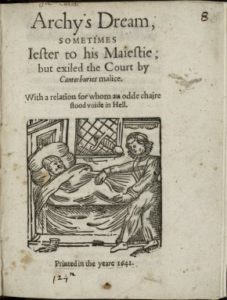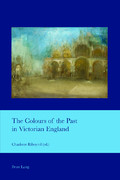An update to the Bibliography of British and Irish History was published on 4th October. 5,233 new records have been added. Some 513 new records relate to Irish history while 267 deal with the history of London, 451 with the history of Scotland and 189 with the history of Wales. The overall total of records available online is 594,068.
We are always looking to improve our subject indexing and coverage and have added a number of new terms to the thesaurus reflecting recent developments in history. “Colours”, “Dreams”, and “Sleep” have all been added and are now searchable by “Subject tree” search in BBIH.

Sasha Handley’s book Sleep in early modern England prompted the addition of “Sleep” as an index term. While most of the references refer to literary representations (“Watching the sleeper in Macbeth”) or religious aspects (“The Nyghtes Watchys”: Sleep deprivation in medieval devotional culture) there are also insights into the social aspects of sleep (Norms, forms and beds: Spatializing sleep in Victorian Britain and Sociable sleeping in early modern England, 1660–1760).
Naturally with sleep there are dreams (and nightmares). The book Dreams in early modern England: “Visions of the night” by Janine Rivière led to the addition of “Dreams” to the list of subjects. As with sleep there are literary or cultural references (Prophecies, dreams, and the plays of John Lyly, a chapter in Staging the superstitions of early modern Europe ), and religious aspects (Dreaming and emotion in early evangelical religion, a chapter in Heart religion: evangelical piety in England & Ireland, 1690-1850).
There are also medical viewpoints to dreams as in Forgotten dreams: Recalling the patient in British psychotherapy, 1945–60 and Demons of desire or symptoms of disease? Medical theories and popular experiences of the “nightmare” in premodern England (a chapter in Dreams, dreamers, and visions: the early modern Atlantic world). Intellectual views are explored in Visions, dreams, and the discernment of prophetic passion: Sense and reason in the writings of the Cambridge Platonists and John Beale, 1640–60 (a chapter in Angels of light?: sanctity and the discernment of spirits in the early modern period).

As for “Colour”, references naturally point to the aesthetics of colour in the arts including illuminated manuscripts but also to technological developments in film (Colour films in Britain: the negotiation of innovation 1900-55), television (The techno-politics of colour: Britain and the European struggle for a colour television standard) and the dyeing industry (Johann Peter Griess FRS (1829–88): Victorian brewer and synthetic dye chemist).

